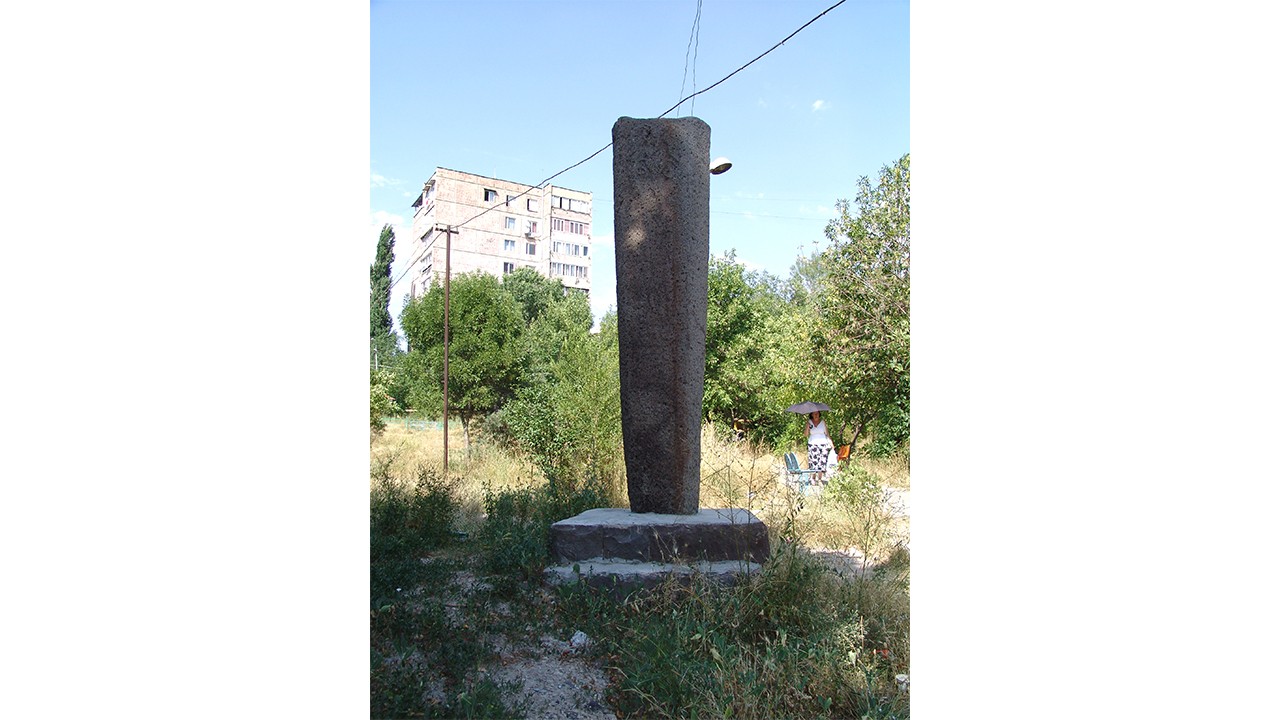MONUMENTS

DRAGON STONE
Second half of the II millennium BC
State index: 1.8.18
The dragon stone (Vishapakar) is situated in the 2nd block of Nor Nork, within the open-air area of the park along the edge of Gai Avenue. It stands on a two-level plinth with a rectangular base, measuring 0.70 meters in height. Discovered in 1909 by the Russian scientist Yakov Smirnov in the Geghama Mountains near Vanki Lake (Tokhmakhan Gyol), it was later relocated to Yerevan in 1976. The stone takes the form of a quadrangular obelisk that widens upwards, featuring a bas-relief of a sacrificial bull.
Made from gray basalt, it measures
3,5 meters in length, with a top width ranging from 0,7 to 0,85 meters and a
bottom width of 0,35 to 0,45 meters.
Dragon stones have been discovered
near sources of artificial lakes, canals, and high mountain irrigation systems.
They are associated with the worship of water, a practice deeply ingrained in
the Armenian highlands and symbolized by the goddess Astghik. Astghik, the
goddess of water, received heifer sacrifices, while pagan temples dedicated to
these goddesses witnessed additional offerings, including the sacrifice of
other parts of the heifers, such as the skin, head, and legs and these parts
were depicted on dragon stones.
These monuments were called dragons (vishap) or giants because of their size, as a result of which the sculptures
and images on them were interpreted as images of snakes and dragons.
Stone carvings called dragons are unique and valuable monuments of ancient culture, characteristic of only to the natives of the Armenian Highlands, and have no parallels outside its borders.
“Scientific Research Center of Historical and Cultural Heritage” SNCO
Yerevan Municipality

